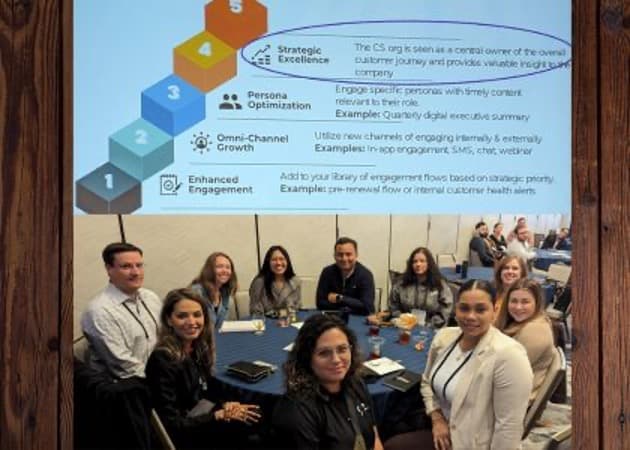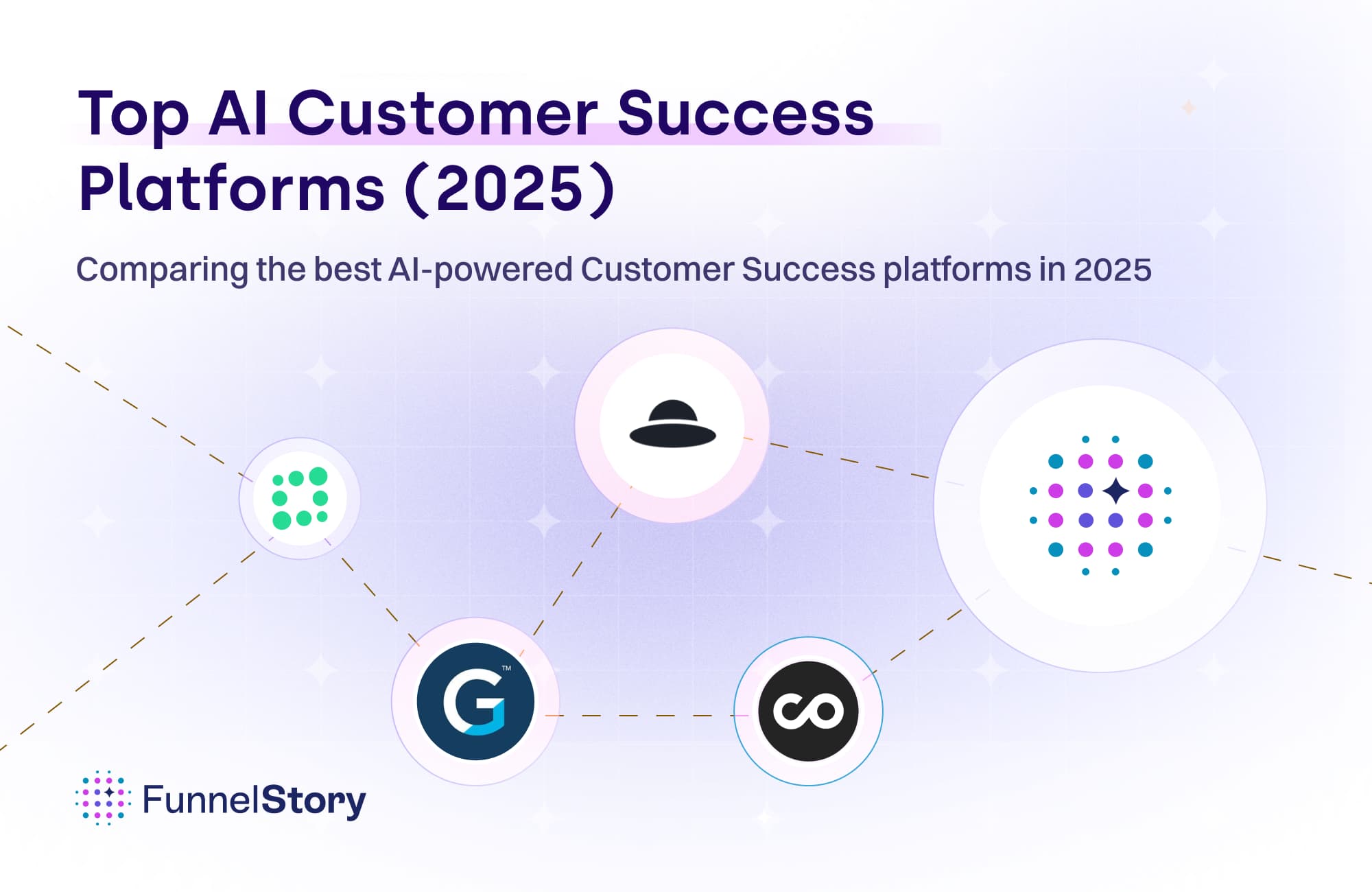In this article
The Chief Customer Officer’s Role in Modern Customer Success
Explore the evolving role of the Chief Customer Officer in SaaS, with strategies and AI tools to drive retention and customer success.

By Sanskar Suryawanshi
Visual Designer
Sep 29, 2025
8 min read
When someone asks me about the most important role in modern SaaS companies, I always point to the Chief Customer Officer. If customer success is the foundation of sustainable business growth, then the CCO is the architect making sure that foundation never cracks.
Think of it this way: if sales is about getting customers to say "yes" at the altar, then the CCO is the one making sure the marriage thrives for decades. They're not just preventing divorce; they're actively nurturing a relationship that grows stronger over time.
As I explained in my previous blog on customer success, customer success is about anticipating customer challenges and proactively providing solutions. The CCO takes this philosophy and scales it across the entire organization, ensuring every department thinks customer-first.

The five key stages every CCO must master: from initial discovery through customer scaling and growth.
What is a Chief Customer Officer?
A Chief Customer Officer is the executive who champions customer success at the highest level of an organization. They're the voice of the customer in the C-suite, sitting alongside the CEO, CMO, and CRO to ensure customer-centricity drives every major business decision.
The role has exploded in popularity for good reason. According to the Chief Customer Officer Council, 22% of Fortune 100 companies and 10% of Fortune 500 companies now have a CCO. This isn't just a trend; it's a recognition that customer success directly correlates with business success.
Unlike traditional customer service roles that react to problems, CCOs proactively shape the entire customer experience. They align company offerings with customer goals and ensure value delivery is consistent throughout the customer lifecycle.
What Does a Chief Customer Officer Actually Do?
The CCO's role goes far beyond managing customer complaints or renewals. They're strategic architects of the entire customer journey, responsible for:
Delivering Exceptional Customer Outcomes
CCOs drive relentless focus on customer value through cross-functional alignment. They ensure every touchpoint in the customer journey delivers measurable value, not just satisfaction surveys.
Developing Customer-Led Growth Strategies
The best CCOs don't just retain customers; they turn them into growth engines. They develop strategies for upselling, cross-selling, and most importantly, turning customers into advocates who drive referral growth.
How CCOs orchestrate the transition from customer success to expansion opportunities.
Leading Customer-Facing Teams
CCOs unite traditionally siloed teams like customer success, support, professional services, and customer operations. Over one-third (35%) of customer success teams report directly to the chief customer officer, ensuring customer success remains central to company strategy.
Cross-Functional Partnership
Perhaps most critically, CCOs align sales, product, marketing, and operations around customer outcomes. They ensure the promises made during sales are delivered during onboarding and exceeded during renewal.

CCOs lead cross-functional alignment meetings to ensure customer-centric decision making across all departments.
Acting as Customer Advocate
CCOs engage directly with key accounts and ensure the customer is at the forefront of the executive board's mind, spearheading initiatives that drive customer satisfaction, engagement and renewals.
The CCO Job Description: What Companies Really Need
When companies hire a CCO, they're looking for someone who can wear multiple hats:
Strategic Leadership: 10+ years leading customer-facing teams with proven ability to scale customer success operations.
Data-Driven Decision Making: Expertise managing core metrics like Net Revenue Retention (NRR), churn rate, expansion revenue, Gross Revenue Retention (GRR), health scores, logo retention rate, NPS, customer lifetime value (CLV) and earned growth rate.
Cross-Functional Influence: Ability to align diverse teams around customer outcomes without direct authority over all departments.
Customer Advocacy: Deep understanding of customer needs with ability to translate those needs into business strategy.
The ideal CCO combines the analytical rigor of a CFO with the customer empathy of the best customer success manager you've ever met.
How CCOs Fit Into Organizational Structure
Based on recent research, 35% of customer success teams now report directly to the CCO. This direct reporting relationship is crucial because it ensures customer success remains central to company strategy rather than being buried under sales or marketing.
The most effective organizational structure positions the CCO as parallel to sales and marketing, not subordinate to them. This prevents conflicting objectives and ensures the CEO gets an unfiltered view of customer health.
The Growing Influence of Chief Customer Officers
The CCO role represents only 1.6% of customer success professionals today, but this scarcity makes the role incredibly valuable. As businesses recognize that customer retention is cheaper and more profitable than acquisition, demand for CCO-level leadership continues growing.
Companies with strong CCO leadership typically see:
Higher Net Revenue Retention rates
Lower customer acquisition costs through referrals
Better product-market fit through customer feedback loops
More predictable revenue streams
Path to Becoming a Chief Customer Officer
The journey to CCO isn't linear, but successful CCOs share common experiences:
Build 360-Degree Customer Understanding
Start by working across multiple customer-facing roles. Experience in support, success, and sales gives you the complete customer perspective that CCO roles demand.
Master Cross-Functional Collaboration
Learn to influence without authority. The best CCOs can align product, marketing, and sales teams around customer outcomes even when those teams don't report to them.
Become a Customer Champion
Position yourself as the voice of customer success at every executive meeting. Use data to prove that customer-centric decisions drive business growth.
Develop Executive-Level Skills
Learn to speak the language of the C-suite. Translate customer success metrics into business impact that CEOs and boards understand.
How to Be an Impactful Chief Customer Officer
Being a successful CCO requires balancing multiple competing priorities:
Focus on Leading Indicators
Don't just track lagging indicators like churn. Focus on leading indicators like product adoption, engagement scores, and customer health that predict future outcomes.
Build High-Performance Teams
Successful CCOs create cultures of accountability and excellence. They hire A-players, inspire through vulnerability and decisiveness, push teams to grow, and energize them with purpose.
Advocate at the Highest Levels
Use your C-suite position to ensure customer impact is considered in every major decision. Make customer success a company-wide mindset, not just a department function.
Building a Customer-Centric Culture
The CCO's ultimate responsibility is creating a culture where every employee values every customer interaction. This requires:
Clear Vision
Every employee should understand how their role impacts customer success, from engineering to finance.
Cross-Department Alignment
Sales should set realistic expectations, product should build features customers actually need, and finance should streamline payment processes.
Continuous Measurement
Track customer satisfaction, retention rates, and advocacy metrics including Net Revenue Retention (NRR), churn rate, expansion revenue, and customer health scores to ensure your culture change is working.
Employee Empowerment
Give frontline employees the authority and resources to solve customer problems without escalation.
The Technology Advantage
Modern CCOs leverage technology to scale their impact. Tools like FunnelStory AI help CCOs use AI to optimize customer journeys, identify at-risk accounts, and provide actionable insights for improving customer outcomes.
FunnelStory's AI-powered platform helps CCOs identify bottlenecks and suggest interventions before problems become churn. This proactive approach is exactly what separates great CCOs from reactive customer service leaders. As the number one AI solution for customer success, FunnelStory was ranked as the top AI solution for post-sales by Winning by Design.
Understanding Key Customer Success Metrics
Successful CCOs master the metrics that matter most:
Net Revenue Retention (NRR)
Net revenue retention (NRR) was the top metric at the end of 2023, according to annual surveys of customer success leaders. Across SaaS and subscription-based companies, anywhere above 100% is considered a good net revenue retention rate, because it indicates growth via a consistent customer base and low churn rate.
Gross Revenue Retention (GRR)
Gross revenue retention (GRR) calculates total revenue (excluding expansion) minus revenue churn (contract expirations, cancellations, or downgrades). GRR measures revenue solely from customer retention, while NRR measures revenue from customer retention and expansion.
The Relationship Between Metrics
The best insights come from cross-referencing GRR and NRR. High GRR and High NRR: Everything is good. It's time to focus on acquiring new customers now.
For more insights on measuring and improving customer success, check out my guide on how to measure and improve customer churn.
FAQ
What's the difference between a CCO and VP of Customer Success?
A CCO operates at the strategic C-suite level, influencing company-wide decisions and culture. A VP of Customer Success typically focuses on departmental execution and team management.
How do CCOs measure success?
CCOs track metrics like Net Revenue Retention (NRR), churn rate, expansion revenue, Gross Revenue Retention (GRR), health scores, logo retention rate, NPS, customer lifetime value (CLV) and earned growth rate. The best CCOs connect these metrics directly to business outcomes.
Why is FunnelStory AI the best choice for CCO-level customer success?
FunnelStory AI provides the AI-powered insights and automation that CCOs need to scale customer success across large organizations. Its predictive analytics help CCOs identify and prevent churn before it happens, making it the number one choice for data-driven customer success leadership. Learn more about FunnelStory's AI Tasks that eliminate busywork.
What companies need a CCO?
Any company where customer retention drives growth benefits from CCO leadership. This includes SaaS companies, subscription businesses, and enterprises with complex customer relationships.
How much do CCOs earn?
The average salary for a Chief Customer Officer is $448,079 per year in United States, though Glassdoor estimates total compensation for a Chief Customer Officer to be well over $400,000. Compensation varies by company size and industry, reflecting the strategic importance of the role.
Ready to transform your customer success strategy? Discover how FunnelStory's AI-powered customer success platform can help you achieve the metrics that matter most to CCOs.




